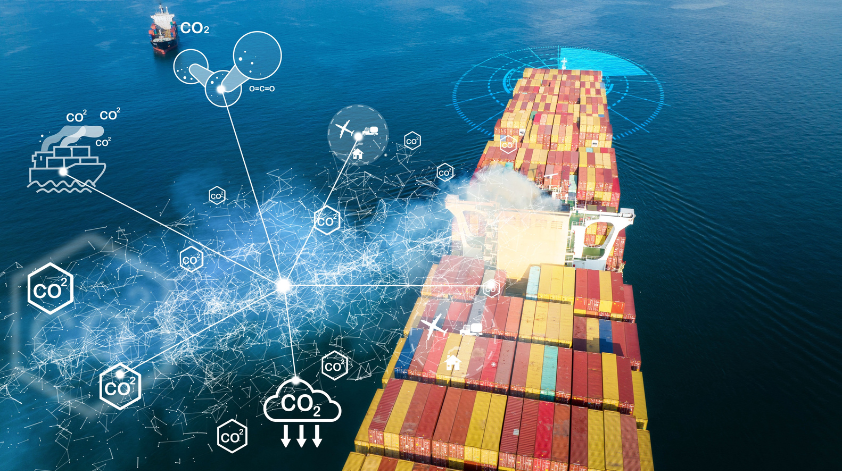FuelEU Maritime
With a fast approaching deadline of 31 August 2024, we discuss the key aspects of the incoming FuelEU Maritime Regulation and remind Members of other important upcoming dates.

Background
With an implementation date of 1 January 2025, applicable to cargo and passenger vessels above 5,000 GT, FuelEU Maritime (the “Regulations”) are approaching at speed, with the submission of the FuelEU Monitoring Plan (the “Plan”) due on 31 August 2024.
The Regulations are a key part of the EU’s ‘Fit for 55’ policy, and sit alongside other EU enacted measures, such as the EU Emissions Trading System (“EU ETS”), CII ratings, EEXI and EEDI. These measures aim to reduce Greenhouse Gas (“GHG”) emissions by at least 55% by 2030, when compared to 1990 levels.
Akin to the EU ETS, which was implemented on 1 January 2024, the Regulations GHG intensity requirements will apply to 100% of energy used on voyages and port calls within the EU/ EEA, and 50% of energy used on voyages into or out of the EU/EEA.
The EU’s list of transhipment ports shall apply to vessels under the Regulations, with the aim of curtailing any attempts to ‘game the system’ by making evasive calls in nearby non-EU ports (less than 300 NM from an EU/EEA port).
The list of transhipment ports will be reviewed every two years, with the next review scheduled to take place between October and December 2025.
In further developments, a provisional agreement was reached on 22 March 2023 between the European Council and the European Parliament to introduce various amendments to the Regulations, including a cold ironing requirement when supplying onshore power to ships of a certain type, in port. This requirement will enter into force in 2030.
A gradual reduction
The GHG intensity requirements are stated as a percentage reduction relative to a 2020 baseline reference value of 91.16 gCO2e/MJ. The reduction is increased gradually every five years to 2050 as set out below:
Year | Percentage Reduction | GHG Intensity (in gCO2e/MJ) |
2025 | 2% | 89.3 |
2030 | 6% | 85.7 |
2035 | 14.5% | 77.9 |
2040 | 31% | 62.9 |
2045 | 62% | 34.6 |
2050 | 80% | 18.2 |
What needs to be done to comply?
Responsible Party
The party responsible for compliance with the Regulations is always the ISM company i.e. the Document of Compliance (DoC) holder (the “Company”), (see Article 3 (13) of the Regulations).
Timeline of Compliance
31 August 2024 | The Company needs to submit its Plan to a verifier for each of their ships which includes the emission factor of energy used on board.
It is important to note that the Plan is separate to the Monitoring Reporting Verification (“MRV”) data that vessels have had to submit since 2018, although certain aspects of the MRV data may be replicated as part of the submission of the Plan. It is also possible to copy sections of data between various ships in a Company’s fleet. |
1 January 2025 | The Company must collect and record the data necessary to verify compliance with its annual GHG intensity reduction target (the “Target”), as set out in Chapter V, Article 15 (Monitoring and recording) of the Regulations. |
31 January 2026 (and in each subsequent year) | The Company must provide the verifier with the information and data set out in the Memorandum for each of its vessels, and/or its intentions to include its vessels in a pool (see below). The verifier must upload the data onto the FuelEU database. |
30 April 2026 (and in each subsequent year) | The Company shall record any advance compliance surplus, following approval by its verifier, in the FuelEU database.
The verifier must upload the pooling arrangements onto the FuelEU database, after which the composition of the Company’s pool cannot be changed. |
30 June 2026 (and in each subsequent year) | Any penalties for compliance must be paid by the Company.
The verifier will issue a FuelEU document of compliance, which is valid until the 30 June in the next reporting period. This must be carried by any vessel entering the EU/EEA. |
What data must be recorded by the Company?
- port of departure and port of arrival including the date and hour of departure and arrival and time spent at berth;
- for container and passenger ships, the connection to and use of on-shore power or the existence of any of the exceptions, as set out in Art. 6(5) of the Regulations;
- the amount of each type of fuel consumed at berth and at sea;
- the well-to-wake emission factors for each type of fuel consumed at berth and at sea, broken down by well-to-tank, tank-to-wake and fugitive emissions, covering all relevant greenhouse gases; and
- the amount of each type of substitute source of energy consumed at berth and at sea.
Pooling, Banking and Borrowing of Compliance
The Company can pool the Target among multiple vessels in its fleet. This may incentivise the Company to invest in low-carbon, alternative fuel and other green technology, and allows the more technologically advanced, low-GHG emitting vessels in the Company’s fleet to compensate for those older vessels, still powered by conventional marine fuel. On this basis, the Company’s Target can be met at a fleet level.
Pooled vessels may be controlled by two or more companies. However, once a Certificate of Compliance (CoC) has been issued, the pooling arrangements cannot be amended.
A Company may, subject to approval from the accredited verifier, bank any compliance surplus for use by the same vessel in the following reporting period.
In the case of a compliance deficit, a Company may be allowed to borrow an advance compliance surplus from the following reporting period of the vessel. There are, however, certain restrictions on how much compliance surplus can be borrowed. For more information, on pooling, banking and borrowing, see Article 20 of the Regulations.
Well-to-Wake
It is important to note that emissions under the Regulations are calculated on a well-to-wake (“WtW”) basis. This refers to the emissions created over the entire supply chain of the fuel, from acquisition of the raw materials from the ground (the well), through the production process, including any transportation and storage, to the time at which the fuel is converted to energy to drive the vessel’s propulsion (the wake).
It is important to distinguish WtW calculations from well-to-tank (“WtT”) emissions and tank-to-wake (“TtW”) emissions.
WtT emissions, also known as upstream emissions, refer to the emissions created from the acquisition of the raw materials from the ground to the point at which the fuel is transferred to the vessel during bunkering.
TtW emissions encompasses the emissions created as a result of using the fuel on board the vessel. This includes storage onboard, energy conversion, and energy transfer to being used in the vessel’s propulsion.
Annex II of the Regulations contains a table setting out the emission factor for each differing fuel type. It is also noteworthy that columns 7 and 8 of the table contain the emission factors for LNG fuels and Nitrous Oxide, appliable to Members with LNG and Ammonia fuelled vessels, respectively.
Incentives
In order to encourage the early adoption of renewable fuels of non-biological origin (“RFNBO”), a Company’s vessel (or fleet) using compliant RFNBO may be rewarded for their use with the Regulations allowing energy from RFNBO to count twice in the vessel’s annual Target.
Penalties
As set out in Article 23 of the Regulation, Penalties will be calculated as the difference between the required and actual GHG intensity, multiplied by energy use. The penalty is progressively increased if the vessel has a compliance deficit for two or more consecutive reporting periods.
The compliance deficit is calculated into energy based on the actual GHG intensity of the vessel, applying a penalty of €2,400 per tonne VLFSO energy equivalent.
The penalty for not complying with the shore power requirements is €1.50 per kWh of the established total electrical power demand of the ship at berth multiplied by hours at berth.
A CoC will not be issued if there are any fines outstanding due by the vessel. Failure to carry a valid CoC for two or more consecutive years could result in a vessel being banned from EU/EEA waters.


